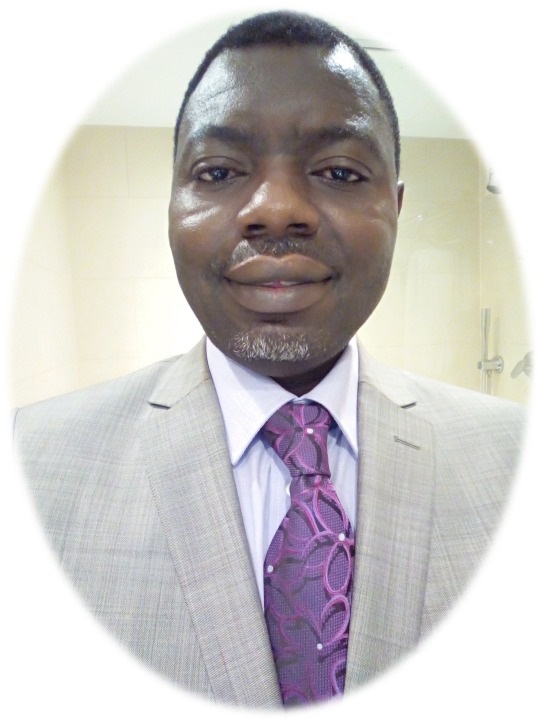État des lieux de la pratique de la radiologie interventionnelle en Afrique subsaharienne francophone
DOI:
https://doi.org/10.55715/jaim.v12i2.100Keywords:
Interventional radiology, Sub-saharan Africa, French-speaking countries.Abstract
Objective : To describe the state of the ractice of interventional radiology (IR) in sub-Saharan Africa French-speaking countries.
Methods: Descriptive cross-sectional study conducted from 1 May to 31 August 2017. A self-administered questionnaire was addressed by email and by direct contact to radiologists practicing in French-speaking sub-Saharan Africa. The socio-demographic profile of the respondents, the equipment available and the interventional radiology procedures practiced were filled in.
Results: The response rate was 27% for 92 radiologists. The average age of respondents was 36.93±6.16 years. There was a male predominance (sex ratio=2.14). Five radiologists (5%) had a university degree in IR and 46 (50%) had undergone continuing medical education in interventional radiology. The most available imaging modality was ultrasound (99%). Only 4% of the radiologists had an angiography room. Of the 67(73%) respondents performing IR procedures, 29(43%) of the procedures were diagnostic, 2(3%) therapeutic and 36(54%) both. The most common IR procedures were percutaneous sampling (67%) for diagnostic procedures, evacuation of collections and abscesses (41%) and osteoarticular therapeutic procedures (14%). All performed non-vascular procedures and only 09 (13%) performed vascular procedures.
Conclusion: Interventional radiology in sub-Saharan Africa french speaking countries remains embryonic. It is necessary to strengthen training policies and improve technical platforms.
RESUME
Objectif : Décrire l’état des lieux de la pratique de la radiologie interventionnelle (RI) en Afrique subsaharienne francophone.
Méthodes : Etude transversale descriptive menée du 1er mai au 31 août 2017. Un questionnaire auto-administré a été adressé par mail et par contact direct à des radiologues exerçant en Afrique subsaharienne francophone. Le profil sociodémographique des enquêtés, les équipements disponibles et les actes de radiologies interventionnels pratiqués ont été renseignés.
Résultats : Le taux de réponse était de 27% soit 92 radiologues. L’âge moyen des répondants était de 36,93±6,16 ans. Il y avait une prédominance masculine (sex-ratio=2,14). Cinq radiologues (5%) avaient un diplôme universitaire de RI et 46 (50%) avaient suivi une formation médicale continue en radiologie interventionnelle. Le moyen d’imagerie le plus disponible était l’échographie (99%). Seulement 4% des radiologues disposaient d’une salle d’angiographie. Sur 73% (67) des enquêtés réalisant des actes de RI, 43%(29) des actes étaient à visée diagnostique, 3%(2) thérapeutiques et 54%(36) les deux. Les actes de RI les plus pratiqués étaient les prélèvements percutanés (67%) pour les actes à visée diagnostiques, des évacuations de collections et d’abcès (41%) et des gestes thérapeutiques ostéo articulaires (14%). Tous pratiquaient des actes non vasculaires et seulement 09 (13%) des actes vasculaires.
Conclusion : La RI en Afrique subsaharienne francophone reste embryonnaire. Un renforcement des politiques de formation et l’amélioration du plateau technique sont nécessaires.
Downloads
References
2. Murphy TP, Soares GM. The evolution of interventional radiology. Semin Intervent Radiol. 2005;22(1):6–9.
3. Sunshine JH, Lewis RS BM. A Portrait of Interventional Radiologists in the United States. AJR Am J Roentgenol. 2005;185(5):1103–12.
4. Teng GJ, Xu K, Ni CF, Li LS. Interventional radiology in China. Cardiovasc Intervent Radiol. 2008;31(2):233–7.
5. Menechal P, Valero M, Megnigbeto C, Marchal C GJ. La radioprotection des patients et des travailleurs en radiologie interventionnelle et au bloc opératoire. Hygiène sécurité du traivail. 2011;222:27–33.
6. World Health Organization. Global atlas of medical devices. WHO Medical device technical series. 2017. 480 p.
7. Kawooya MG. Training for Rural Radiology and Imaging in Sub-Saharan Africa: Addressing the Mismatch Between Services and Population. J Clin Imaging Sci. 2012;2(2):37.
8. Mbewe C, Chanda-kapata P, Sunkutu-Sichizya V, Lambwe N, Yakovlyeva N, Chirwa M, et al. An audit of licenced Zambian diagnostic imaging equipment and personnel. Pan Afr Med J. 2020;8688.
9. World Health Organization. World health statistics 2020: monitoring health for the SDGs, sustainable development goals. World Health Organization; 2020. viii, 77 p.
10. Muhogora W, Rehani MM. Review of the current status of radiation protection in diagnostic radiology in Africa. J Med Imaging. 2017;4(3):031202.
11. Kline AD, Dixon RG, Brown MK, Culp MP. Interventional Radiology Readiness Assessment Tool for Global Health. J Glob Radiol. 2017;3(May):1–5.
12. Boudghene F. Radiologie interventionnelle en oncologie : état des lieux Interventional radiology in oncology : Inventory. J Radiol. 2011;91:753–6.
13. O’Brien J, Baerlocher MO, Asch MR, Hayeems E, Kachura JR, Collingwood P. Limitations Influencing Interventional Radiology in Canada : Results of a National Survey by the Canadian Interventional Radiology Association (CIRA). Cardiovasc Interv Radiol. 2007;30(5):847–53.
14. Zener R, Lee SY, Visscher KL, Ricketts M, Speer S, Wiseman D. Women in Radiology: Exploring the Gender Disparity. J Am Coll Radiol. 2016;13(3):344-350.e1.
15. Wah TM, Belli AM. The Interventional Radiology (IR) Gender Gap: A Prospective Online Survey by the Cardiovascular and Interventional Radiological Society of Europe (CIRSE). Cardiovasc Intervent Radiol. 2018;41(8):1241–53.
16. Englander MJ, O’Horo SK. Women in interventional radiology: How are we doing? Am J Roentgenol. 2018;211(4):724–9.
17. Jaschke W, Bartal G, Trianni A, Belli AM. Fighting the Gender Gap in Interventional Radiology: Facts and Fiction Relating to Radiation. Cardiovasc Intervent Radiol. 2018;41(8):1254–6.
18. Adigo A, Toure A, Djagnikikpo O, Adambounou K, Konenin N, Agoda-Koussema L, et al. Fréquence et sources de stress perçues par les médecins radiologues de l’Afrique noire francophone. J Afr Imag Med 2016;8(3):24–30.
19. Keeling AN, Reekers JA LM. The Clinical Practice of Interventional Radiology : A European Perspective. Cardiovasc Interv Radio. 2009;32:406–11.
20. Ogbole GI, Adeyomoye AO, Badu-Peprah A, Mensah Y, Nzeh DA. Survey of magnetic resonance imaging availability in West Africa. Pan Afr Med J. 2018;30.
21. Maboreke T, Banhwa J, Pitcher RD. An audit of licensed zimbabwean radiology equipment resources as measure of healthcare access and equity. Pan Afr Med J. 2019;34.
22. Makary MS, Rajan A, Miller RJ, Elliott ED, Spain JW, Guy GE. Institutional Interventional Radiology Symposium Increases Medical Student Interest and Identifies Target Recruitment Candidates. Curr Probl Diagn Radiol. 2018;48(4):363–7.
23. Tan Z-B, Wang H-J, Zou R, Mao X-Q, Zhang J, Wang Q-Q, et al. Curriculum of Interventional Radiology for Clinical Medical Undergraduates. Chin Med J (Engl). 2017;130(19):2380–1.
24. Mollura DJ, Soroosh G, Culp MP, Averill S, Axelrod D, Baheti A, et al. 2016 RAD-AID Conference on International Radiology for Developing Countries: Gaps, Growth, and United Nations Sustainable Development Goals. J Am Coll Radiol. 2017;14(6):841–7.
25. Laage Gaupp FM, Solomon N, Rukundo I, Naif AA, Mbuguje EM, Gonchigar A, et al. Tanzania IR Initiative: Training the First Generation of Interventional Radiologists. J Vasc Interv Radiol. 2019;30(12):2036–40.
26. European Society of Radiology (ESR); Cardiovascular and Interventional Radiological Society of Europe (CIRSE). Interventional radiology in European radiology departments : a joint survey from the European Society of Radiology (ESR) and the Cardiovascular and Interventional Radiological Society of Europe (CIRSE). Insights Imaging. 2019;10(16):1–9.
Downloads
Published
How to Cite
Issue
Section
License

This work is licensed under a Creative Commons Attribution-NonCommercial-ShareAlike 4.0 International License. Copyright @2017. This is an open-access article distributed under the terms of the Creative Commons Attribution-NonCommercial-ShareAlike 4.0 International License (http://creativecommons.org/licenses/by-nc-sa/4.0/) which permits unrestricted non-commercial used, distribution and reproduction in any medium






